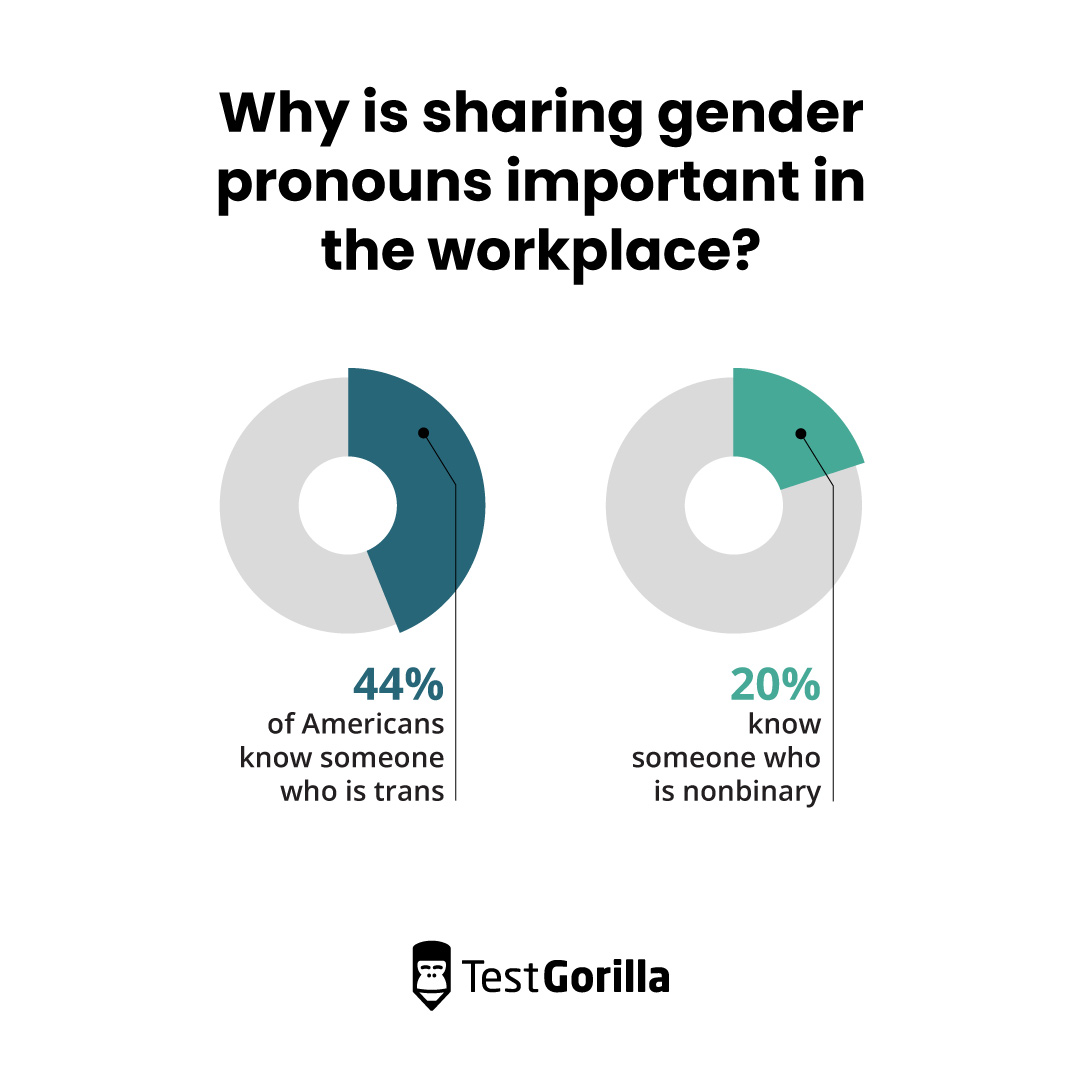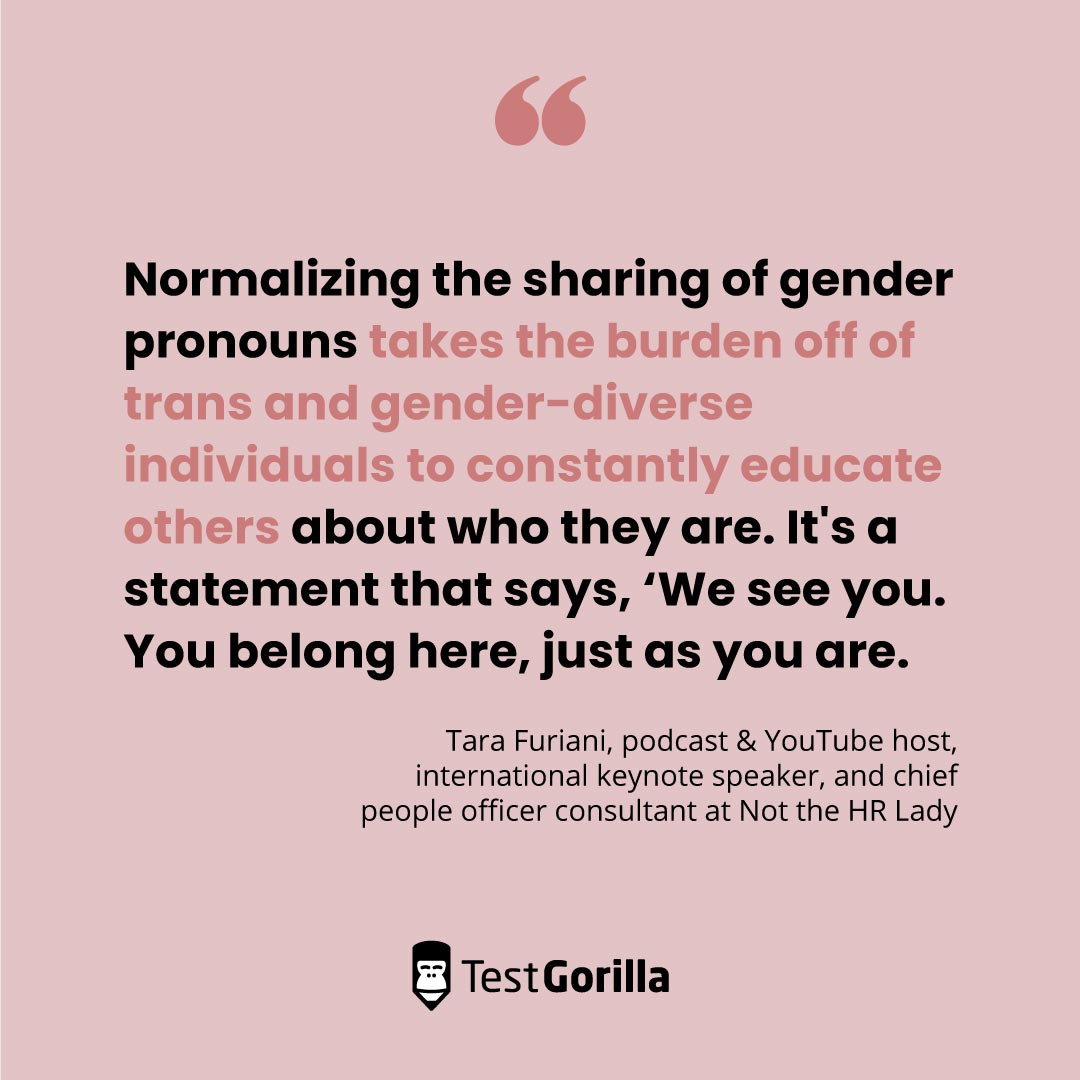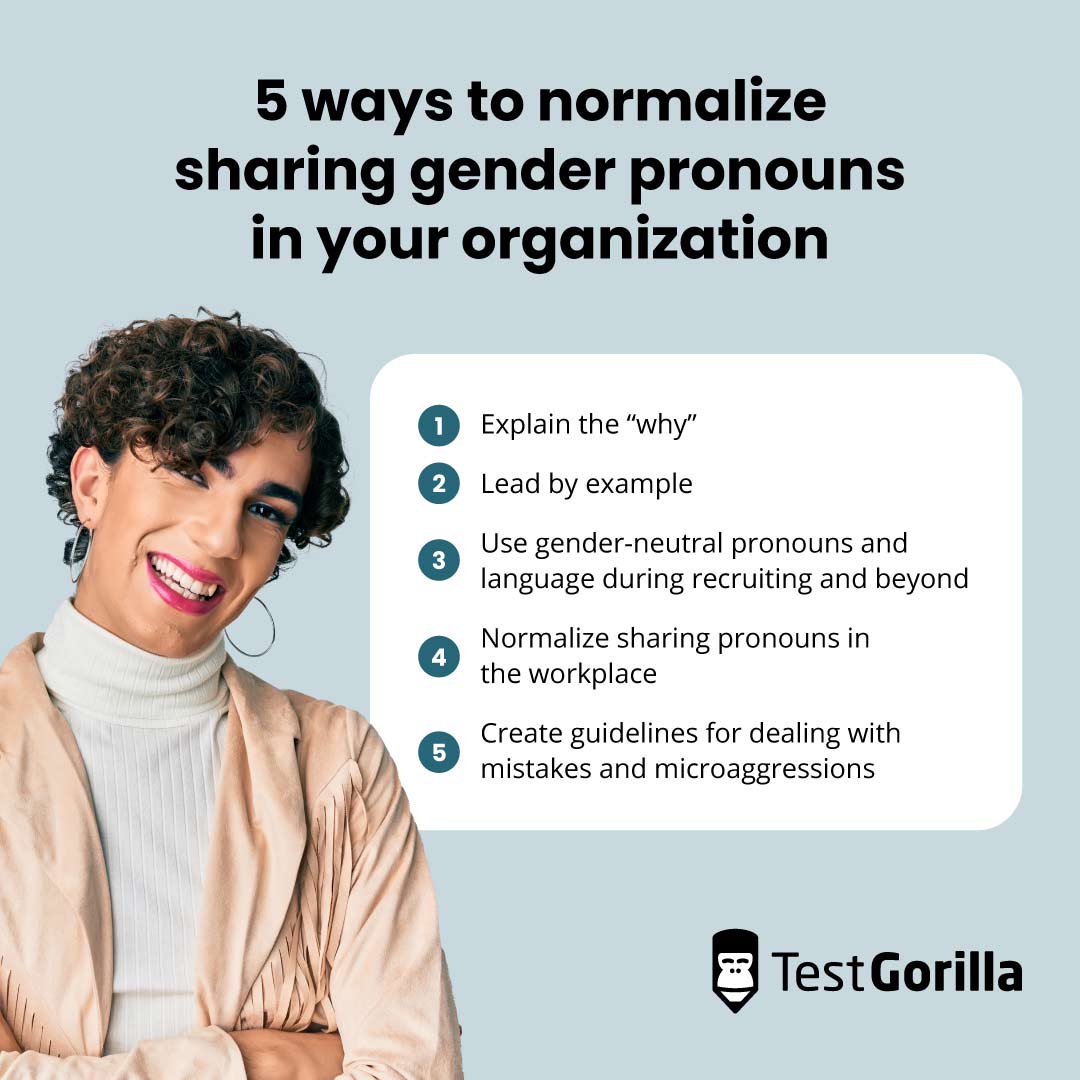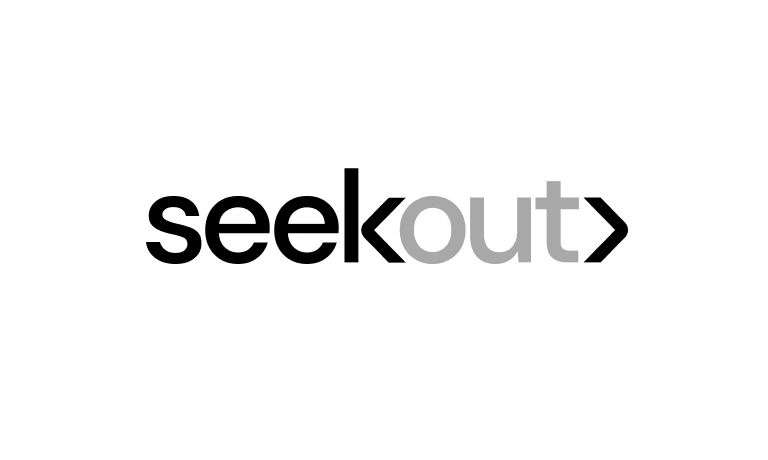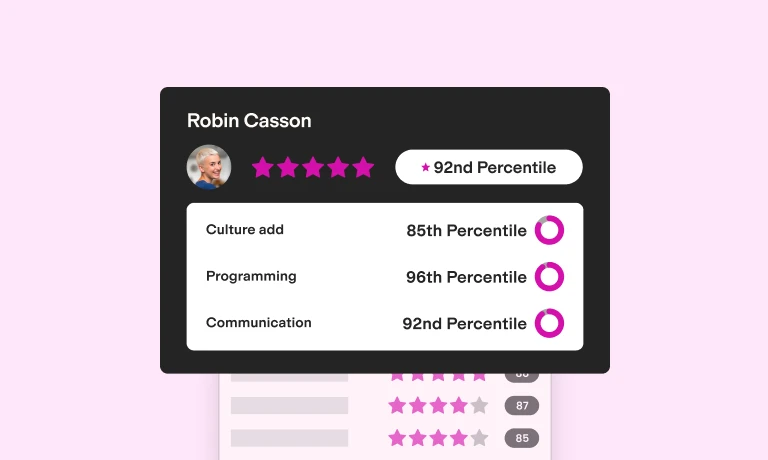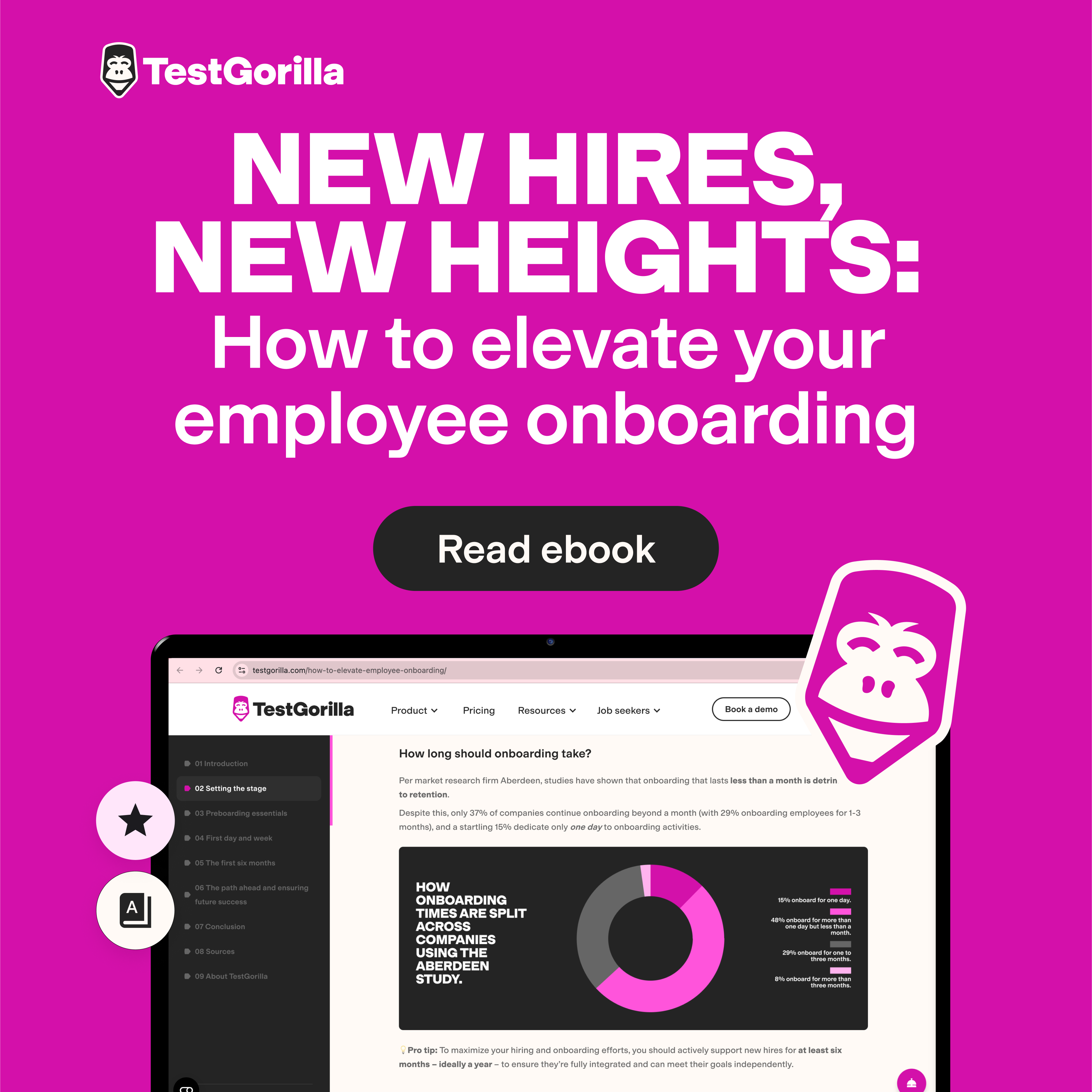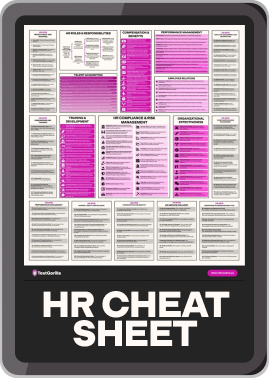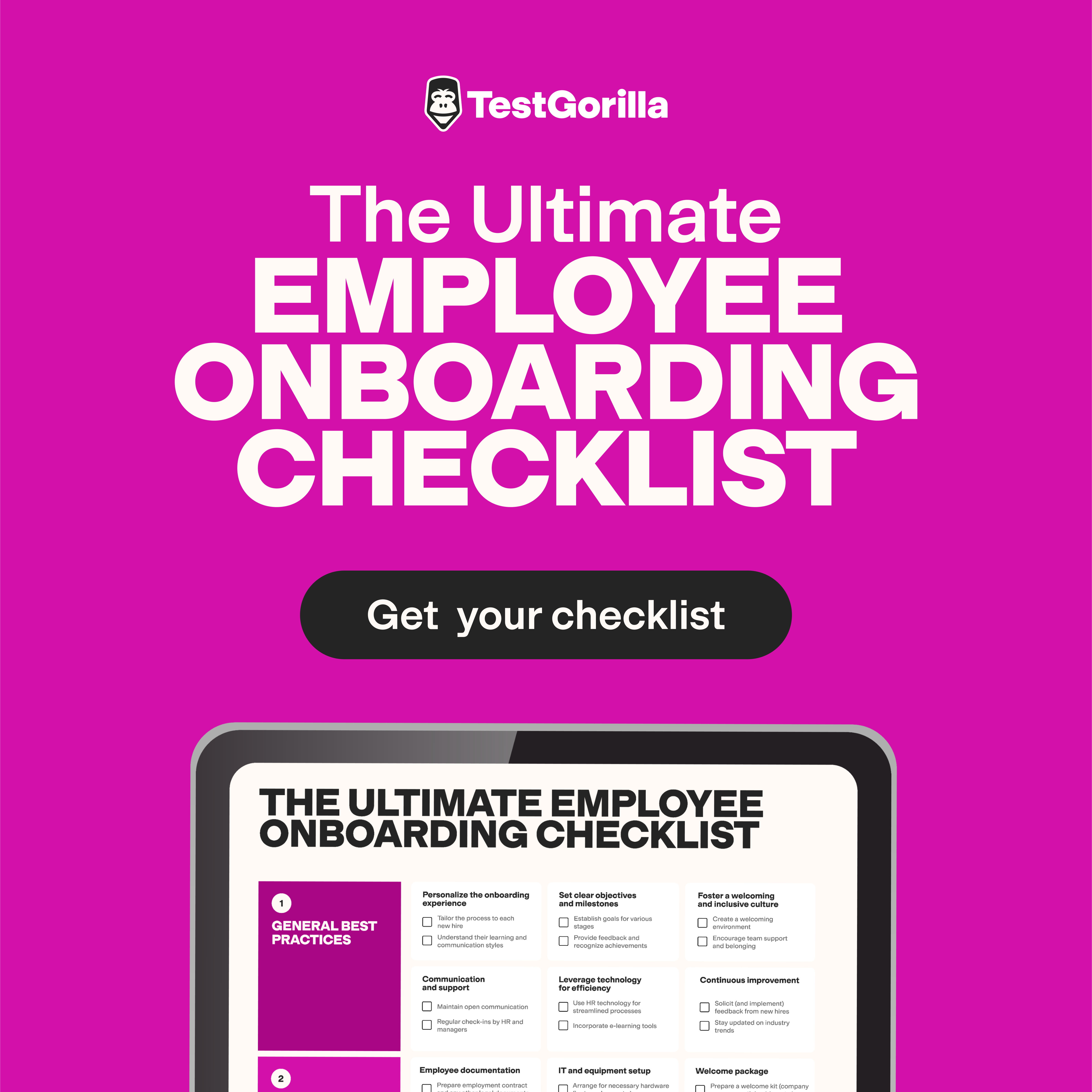Meet Alex, a talented, experienced software engineer at a well-established tech company.
A couple of years ago, Alex came out as transgender and began her transition. While most people have been supportive, Alex still experiences issues with her manager, Sarah, who occasionally still uses the wrong pronouns.
In their Monday team meeting, it happens again, when Sarah says, “Next, I'd like to hear from him about the code changes."
Cue awkward silence as everyone processes the mistake – except Sarah. Hiding her discomfort, Alex says nothing and proceeds with the updates. When Sarah does it again, Alex gently reminds her that her pronouns are “her/she.” With a terse, “Right. I forgot” Sarah moves on to speak to someone else.
Alex tries to forget the incident, but the indications that Sarah doesn’t recognize her authentic self have become too many to ignore. Back in her office, Alex pulls up LinkedIn and starts to check job opportunities.
Respecting and sharing gender pronouns can help you attract and retain top diverse talent by promoting a more inclusive environment. In this post, we’ll look at this and other benefits to your people and organization, plus five steps to normalize sharing gender pronouns in the workplace.
Why is sharing gender pronouns important in the workplace?
Over 44% of Americans know someone who is trans, and 20% know someone who is nonbinary.
That’s a lot of people you’re excluding if you don’t respect their pronouns.
Normalizing sharing gender pronouns in the workplace benefits everyone, including your business. Let’s take a look at how.
Supports trans and gender-diverse individuals
Someone’s pronouns are an important part of their identity. When you respect that, you send a message that your workplace is a supportive environment where everyone is equally valued. This helps reduce the stress that pronouns – and the assumptions they imply – cause for LGBTQ+ people, which positively impacts mental health and wellbeing.
“Sharing your gender pronouns promotes inclusivity in two key ways,” says Clay Slang, growth product manager at TestGorilla. “First, it normalizes the behavior of identifying your gender. Second, it dismantles the idea that you can tell someone’s pronouns by looking at them.”
Being “an only” at work can also limit how able people feel to speak up and express themselves, says Cecilia Righini, founder and director of queer and feminist design agency Studio Lutalica. Normalizing sharing pronouns avoids the implication that those who do it are somehow different, and that “normal” people don’t need to.
“Normalizing the sharing of gender pronouns takes the burden off of trans and gender-diverse individuals to constantly educate others about who they are. It's a statement that says, ‘We see you. You belong here, just as you are.’"
Tara Furiani, podcast & YouTube host, international keynote speaker, and chief people officer consultant at Not the HR Lady
Makes you more attractive to diverse talent
It’s well known that a diverse workforce can transform your business, which is why achieving greater diversity is an objective for 85% of employers.
Gen Z and, coming soon, Gen Alpha are the talent of the future, and adults under 30 in the US are more likely than older adults to identify as trans or nonbinary. Twenty-five percent (25%) of LGBTQ youth use “they/them,” a combination of “he/him,” “she/her,” “they/them,” or neopronouns like “ze/zir” or “fae/faer.”
This means you need to show these demographics that you walk the walk when it comes to DE&I.
These days, so many companies have a DE&I policy that it takes more than that to impress diverse talent. Sharing gender pronouns is a simple, easy step toward creating the true inclusivity they’re looking for.
“Talented individuals from diverse backgrounds aren't just looking at your fancy office snacks and perks. They're scrutinizing your culture. When correct pronouns are explicitly shared and respected, it sends a powerful message about your organizational values. It’s a siren call for talent that wants a progressive, respectful workplace.”
Tara Furiani
Benefits your business
“Ignoring the pronoun conversation and using the wrong pronouns can have seriously negative effects on the bottom line,” says Suzanne Wertheim, PhD, chief executive officer and founder of Worthwhile Consulting.
She’s personally heard of companies that have lost out in some way due to incorrect pronoun use or misgendering (using the incorrect pronouns). For example, high-level job candidates who withdrew from consideration; expensive programmers who got pulled out of a productive flow state; or sales cycles that ended abruptly.
When you look at it that way, problematic language can be expensive.
“Normalizing gender expression costs a lot less than lawsuits or high employee turnover!”
Candis Fox, diversity consultant and career coach at LLC.Services.
By contrast, Cecilia affirms that sharing gender pronouns on their About page has had a positive impact for Studio Lutalica, helping attract trans and non-binary clients as well as team members.
5 ways to normalize sharing gender pronouns in your organization
Now you know the benefits of sharing gender pronouns, let’s take a look at how to normalize it in your organization.
1. Explain the “why”
For cisgender people who rarely experience someone saying they “couldn’t tell” or “didn’t know” how to address them properly, sharing pronouns may seem like “a fuss about nothing.” For this and other reasons, like ingrained bias or open hostility, you may encounter some resistance.
If so, gently point out that using someone’s pronouns is a matter of basic human rights, dignity, and respect. You could also open their eyes to the business advantages of diverse workforces, or explain how sharing pronouns signals support to those who are already discriminated against because of who they are. Sharing pronouns also involves zero risk for cisgender people, so there’s no reason not to do it.
Stress that, while it’s a small thing to them, the impact is huge for others.
Clay says: “Sometimes all it takes is taking the time to clearly explain why. Compare the use of pronouns to someone’s name. You wouldn’t call someone ‘Kate’ when they introduce themselves as ‘Katherine.’ We rely on people to tell us how to refer to them and, more importantly, understand who they are. Sharing pronouns serves the same function.”
If people struggle with using non-binary pronouns, remind them that we use “they/them” to refer to individuals all the time. For example: “The doctor just called.” “Really? What did they say?”
To help the message sink in, Candis suggests getting a skilled facilitator to run an experience where everyone is assigned a gender that doesn't suit them. Then, they see how many times they can correctly gender their coworkers, before coming together to share their experiences.
Sharing stories about people or organizations that have normalized sharing gender pronouns can also help people see the value in a way that lecturing them will never do.
2. Lead by example
Creating an inclusive organization starts with leadership, and the best people managers understand that modeling the behaviors you want to see is the best way to drive change. When someone in management starts a conversation with “Hi, I’m…. and my pronouns are….” it normalizes sharing pronouns and makes others feel more comfortable doing so.
“Leaders need a high emotional quotient (EQ), empathy, and the skill to communicate complex issues like this simply and directly. More than anything, they need the courage to lead by example. If they start the meetings with pronouns, so will others. If they correct mistakes or microaggressions in real-time, it sets a precedent.”
Tara Furiani
Talent assessments are a great way to hire for and develop those crucial soft skills. For example, active listening, empathy, open-mindedness, and the ability to understand different perspectives or resolve conflicts.
Some skills tests you can use include:
Skills-based hiring also levels the playing field for diverse candidates by assessing them based on what they can do, not who they are, which widens your global talent pool. It also lets you develop leaders from diverse backgrounds, which can boost diversity at upper levels by giving people a role model.
3. Use gender-neutral pronouns and language during recruiting and beyond
Gender inclusivity goes beyond pronouns and extends to how you speak, write, or communicate about people. Language is a powerful tool for shaping societal attitudes, so you should always aim for inclusive, non-discriminatory language that reflects the reality of who you’re addressing.
For example, instead of greeting a group of people with “Hi, guys,” try “Hi, everyone” or "How are you all doing?"
Creating a more trans-inclusive, LQBTQ+-friendly workplace starts with your job postings. Use gender-neutral pronouns and language throughout, including job titles. Think, “salesperson” rather than “salesman” and “server,” not “waitress.”
Create a full set of gender pronoun options in your application forms, including less frequent ones like “fae/faer.” If you have limited space, leave an option for them to self-describe rather than having to label themselves as “other.”
Offer and ask about pronouns during interviews, and use them throughout, or use gender-neutral pronouns until you’re sure. After hiring, integrate pronoun sharing into onboarding sessions, including sharing company policies around this. These should include misgendering in formal definitions of harassment to set an expectation of respect and inclusion through correct pronoun use.
Avoid saying “preferred pronouns” since this implies that there’s an element of flexibility about pronoun use, or that someone’s identity is somehow “optional.”
4. Normalize sharing pronouns in the workplace
Adding pronouns to visible parts of your professional profiles takes almost no effort but goes a long way toward letting everyone know that they belong.
When he started working at TestGorilla, Clay really appreciated that most people include their pronouns on Slack and in email signatures. “It takes two seconds,” he says, “and the impact is huge.”
Ways to share gender pronouns include:
Email signatures and business cards
Online profiles like LinkedIn, Zoom, Slack, etc.
Introductions. Even when you feel confident about someone’s gender identity, get into the habit of introducing yourself with your pronouns and asking for theirs.
At the start of meetings. Go around the room and have everyone introduce themselves with their pronouns. For in-person gatherings, include pronouns on name tags.
Make these practices the norm but not obligatory. This avoids forcing someone to out themselves if they’re not comfortable or fueling resentment from those who aren’t yet convinced of the need.
5. Create guidelines for dealing with mistakes and microaggressions
Mistakes happen but, even when it’s accidental, misgendering is a microaggression that can cause people to feel disrespected or invalidated, which can affect their ability to perform well.
“[It] takes you out of the moment,” says Clay, “At best, it’s a recognition that [they don’t] see you the way you see yourself, which can be destabilizing, no matter the context. At worst, it reinforces the fundamental rejection of your identity perpetuated by society at large.”
Getting used to new pronouns can involve grammatical challenges, though, so allow some leeway for people to practice before it comes naturally.
“I have a grace period of about two months for daily interactive co-workers,” says Candis, “I understand it can take time to reroute that linguistic pattern. During that time, I ask them their pronouns until they get more practiced. I give more time for those with less proximity or frequency in interchange.”
At any time, says Suzanne Wertheim, “the best way to treat honest mistakes is like telling someone ‘You've got spinach in your teeth.’ You should let them know right away, and not make a big deal out of it.” This avoids embarrassing both parties and stops us from reinforcing the idea that respecting people’s gender identity is any kind of hardship. The point of making pronoun-sharing standard practice is to foster inclusion, not division.
The person who made the mistake should apologize, correct themselves, and move on. If they don’t realize at the time, they can apologize later in private.
It’s important to note that deliberate misgendering is an intentional act of discrimination that contributes to a hostile workplace. It may even be legally actionable behavior, making the aggressor a potentially expensive liability.
To deal with this, start by pointing out the behavior and reminding people that it’s against your policies. If this fails, you may need sensitivity training, DE&I education, mediation, performance reports, disciplinary action, or even termination.
The best insights on HR and recruitment, delivered to your inbox.
Biweekly updates. No spam. Unsubscribe any time.
Foster an inclusive workplace by sharing gender pronouns
Sharing gender pronouns in the workplace helps create a more supportive, inclusive environment for trans and gender-diverse people.
This benefits your organization by making you more attractive to diverse talent, and helps you avoid employee churn or expensive lawsuits.
To normalize sharing gender pronouns, raise awareness of the huge impact this small action can have. Leaders should set an example by sharing their pronouns and asking for other people’s during conversations and meetings. Make it standard, but optional, to share pronouns in work profiles, and create guidelines to deal with accidental or deliberate misgendering.
Build inclusivity into hiring by allowing people to state their pronouns in job applications, and using inclusive language at all times. Finally, use skills-based hiring to hire and develop teams and leaders with the right soft skills to navigate these challenges and create a truly inclusive, welcoming workplace for everyone.
Skills-based hiring lets you evaluate people based on what they can do, not who they are. Download the 2023 State of Skills-Based Hiring report to learn more.
Related posts
You've scrolled this far
Why not try TestGorilla for free, and see what happens when you put skills first.


